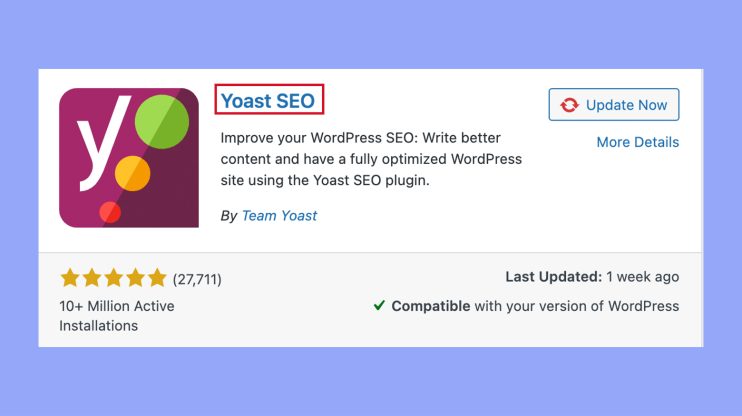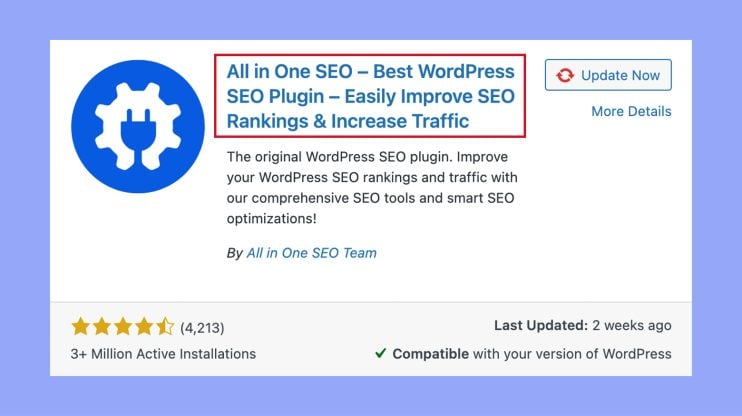What is SEO Title in WordPress
When you’re setting up your WordPress site, paying attention to search engine optimization (SEO) is critical for ensuring that your content reaches its intended audience. The SEO title, specifically, is an element that can significantly influence how well your posts or pages rank in search engine results. It’s the main text that appears in search listings for your site and typically is the first thing a user sees when your page comes up for a specific query. Think of it as a brief handshake or introduction to your content; it needs to be relevant, concise, and appealing to stand out among the numerous search results.
Understanding the difference between the SEO title and other components, like the H1 or the post title in WordPress, is key. While the H1 tag corresponds to the on-page headline of your post or page and appears at the top of your content, the SEO title does not necessarily have to be the same text. It’s the title you define that you want to show in search engines and social networks. By customizing your SEO title, you can improve the chances that search engines will deem your content as more relevant than others, possibly leading to a better ranking and more clicks. To tailor your SEO titles effectively, you can make use of plugins that offer additional features and control beyond the default settings in WordPress.
Understanding SEO titles in WordPress
SEO titles are critical for helping your WordPress site get noticed by search engines and encouraging users to click through to your content.
Importance of SEO titles for search engine rankings
Your SEO title, often called the meta title or page title, is a primary factor that search engines like Google use to determine what your page is about. It’s a strong signal to the algorithm which helps in assigning a rank to your webpage within the search results. A well-optimized SEO title that includes relevant keywords can significantly boost your site’s visibility. This is because search engines prioritize content that appears most relevant to a user’s query. Essentially, the closer your SEO title matches the search intent, the better your chances are of climbing up the ranks and increasing your site’s organic traffic.
Key elements of an SEO title include:
- Relevance: Matching keywords with user queries.
- Length: Keeping it under 60 characters to ensure full display in search results.
- Uniqueness: Each page should have a distinctive title.
The role of SEO titles in user experience
Beyond just rankings, SEO titles directly impact the click-through rate (CTR)—the number of clicks your site receives divided by the number of times your site is shown in the search results. This is your first opportunity to make a good impression on potential visitors. A well-crafted SEO title clearly tells the user what they can expect from your page, which can compel them to click on your link over others. Think of it as the headline of your online advertisement; if it’s persuasive and relevant to the searchers’ interests, you’ll naturally attract more visitors. Remember, even the best content can be overlooked if the title doesn’t resonate with the intended audience.
How to optimize your SEO titles
Getting your SEO titles right means blending creativity with strategy. You’ll need to understand what catches a user’s interest and what will help your content rank well on search engines.
Best practices for crafting engaging SEO titles
To craft an SEO title that will catch the reader’s eye, start by thinking about what makes your content unique. Your title should make a promise that the rest of your article delivers on. Using emotionally charged words can increase click-through rates while staying true to the content of your page keeps users satisfied after they’ve clicked. For example, calling a guide “essential” hints at the comprehensive nature of your content. It’s also prudent to include your brand name if it’s well-known, as it can lend credibility and recognition.
Utilizing keywords for maximum visibility
Keywords are the compass that guides search engines to your content. When you integrate relevant keywords into your SEO title, you’re helping search engines understand what your page is about, which can result in higher visibility in search results. Place your primary keyword towards the beginning of the title to maximize its impact. Remember, overstuffing your title with keywords can make it look spammy, so strike a balance for maximum visibility.
The correct length for SEO titles
Length is crucial for SEO titles—too long, and search engines trim it down, too short, and you may not be making the most of the space to include your keywords and message. Generally, keeping your titles under 60 characters ensures that the entire title appears in search results, providing a cohesive and accessible message to potential visitors. A title with the correct length looks clean and full-bodied, regardless of whether it’s being viewed on desktop or mobile. For optimal length, consider the character width not just the number of characters.
SEO plugins and tools for WordPress titles
Selecting the right SEO plugin can greatly improve the visibility of your WordPress titles in Google search. These tools offer structured settings and enhanced features to make your blog post more prominent.
Yoast SEO: Features and benefits for titles
Yoast SEO has long been a favorite among WordPress website administrators for its comprehensive approach to website optimization.

For SEO titles, the plugin allows you to create templates that automatically apply to your content or to customize each post individually. With Yoast SEO Premium, you also get access to additional features like synonyms and related keyphrase support, which can help increase the relevance of your titles in the eyes of search engines.
Key features:
- Title templates for consistency
- Support for custom titles per post
- Advanced options with Yoast SEO Premium
Benefits:
- Increased control over your SEO titles
- Templates save time for large sites
- Premium features offer extended optimization
All in One SEO (AIOSEO): Features and benefits for titles
All in One SEO (AIOSEO) is another powerful plugin that offers a user-friendly interface and a suite of tools designed to optimize your WordPress site.

Its advantages for crafting SEO titles are clear; with AIOSEO, you can quickly modify your titles for any page or post directly from the WordPress editor. The AIOSEO settings also allow for fine-tuned customization, ensuring your titles are optimized for maximum impact on search rankings.
Key features:
- Easy to adjust SEO titles per page or post
- Option to preview how titles will appear in Google search
Benefits:
- Simplifies the SEO process
- Settings provide granular control over title output
For a more detailed comparison of Yoast SEO and All in One SEO, you can read our article here.
Advanced tips and troubleshooting
When you want to enhance your website’s SEO effectiveness, understanding how to modify title tags and address common SEO title issues can significantly contribute to your optimization efforts.
Customizing title tags with PHP in WordPress
To customize the SEO title tag using PHP in your WordPress theme, you need to add a filter to wp_title. This allows you to dynamically change the title based on specific conditions or variables. For instance:
function your_custom_title_tag($title, $sep) { if (is_single()) { // Fetch the post title $post_title = single_post_title('', false); // Add a custom prefix or suffix $title = $post_title . ' | ' . get_bloginfo('name'); } return $title; } add_filter('wp_title', 'your_custom_title_tag', 10, 2);
Remember to replace your_custom_title_tag with a unique function name that matches your theme. This will prevent conflicts with other plugins or functions.
Solving common SEO title issues in WordPress themes
If you’re experiencing issues with SEO titles not displaying correctly, it’s typically a theme or plugin conflict. Here’s how to troubleshoot:
- Clear your cache: Sometimes, your updates aren’t immediately visible due to caching. Clearing your WordPress cache and your browser cache might resolve the issue.
- Check for theme conflicts: Temporarily switch to a default WordPress theme, like Twenty Twenty-One, and see if the issue persists.
- Review SEO plugin settings: Tools like Yoast SEO provide title templates. Ensure these are configured correctly, as these settings can override your theme’s settings.
- Use Google Analytics: Check for unexpected traffic drops that might suggest broader visibility issues.
- Consult your theme documentation: Some themes have specific settings for SEO titles in their options or a meta box within the WordPress post editor.
If problems continue, you may need to contact your theme’s support for assistance or consider custom PHP solutions as mentioned above.
In conclusion, optimizing your SEO titles in WordPress is essential for boosting your site’s visibility and attracting more traffic. By understanding the role of SEO titles and differentiating them from other components, you can tailor them to improve both search engine rankings and user engagement. Prioritizing effective SEO titles is a key step in your overall digital marketing strategy, ensuring your content reaches and resonates with your intended audience.




